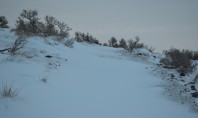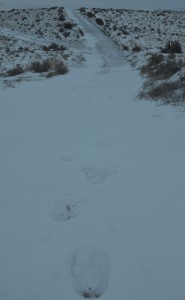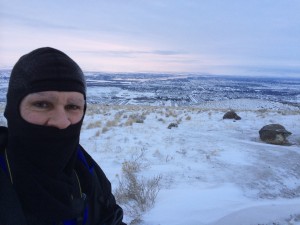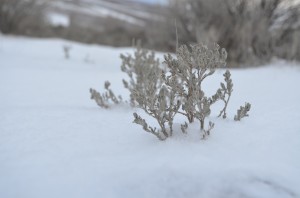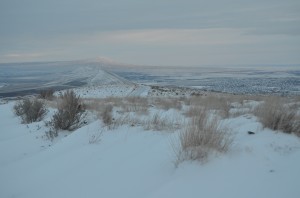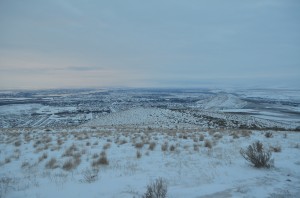Badger Mountain was calling this morning! Even with the fresh snow and the 18-degree temperature, I was excited to head up the Skyline Trail and enjoy the fresh white stuff!
There were several people at the Skyline Trail trailhead parking lot who appeared to have the same idea. Even though the sun wasn’t up yet, the allure of Badger Mountain and a brisk, snowy hike was enough to get a few people out of their warm beds!
Tidbits
Carry your water bottle upside down during cold-weather hikes.
Water freezes from the top down and this will keep your lid from freezing shut! (Trails.com)
It can be dangerous if you aren’t prepared
The snow, cold and weather in general can be unforgiving. It changes without regard to what you want or need. If you approach cold weather hiking with a nonchalant attitude, it can have devastating consequences. There are three key things to consider when you’re making footprints across the snow drifts or hiking in cold weather.
1 – Dress and equip yourself appropriately
Layers are your best bet for keeping warm and protected from the elements. A waterproof and windproof outer shell is must. The wind is actually one of the biggest dangers as it magnifies the cold and can chill the skin quickly. Polypropylene base is a good start. Layer appropriately from there with fleece, wool, down and other more exotic (and expensive!) materials. Avoid cotton as it takes a long time to dry. The layers allows you to shed easily if you’re hiking vigorously and getting a little warm. Then you can put them back on as you’re heading back down the hill. Warm, waterproof footwear is important. Start with wool or wool-blend socks. Gloves or mittens are key to protect your digits. Again, waterproof and windproof is important and I usually wear some liners for a little extra insulation. Head covering is important to prevent heat loss. On the coldest days, I opt for a full-head cover with windproofing built in and flaps that extend down to protect my neck (see picture below). Two other suggestions are traction devices for your shoes/boots and hiking poles. This is dependent on how slippery the trail is and the poles can help prevent a nasty fall.
2-Bring a Cell Phone and Some Basic Supplies
You’ll want a cell phone that will have coverage where you are traveling in case you need to summon help. Water and a snack for short hike are a good idea. A first aid kit with a solar blanket and whistle are other good safety measures.
3-Make Sure you have a Plan
Know where you are going. Also, a map is helpful but, at the least, you should understand the lay of the land. It may not do a lot of good if you call for help on your cell phone and don’t know where you are. Let someone else know your plan including when you are leaving and when you plan to be back. Going with a buddy is a good idea.
Have a Great Time!
Prepare properly and you can stretch hiking into a year-round activity. You’ll enjoy the benefits of better health and you’ll have the chance to enjoy the beauty that surrounds us!

